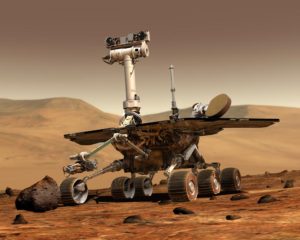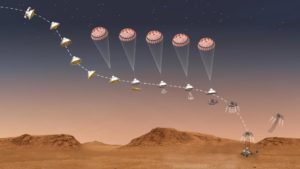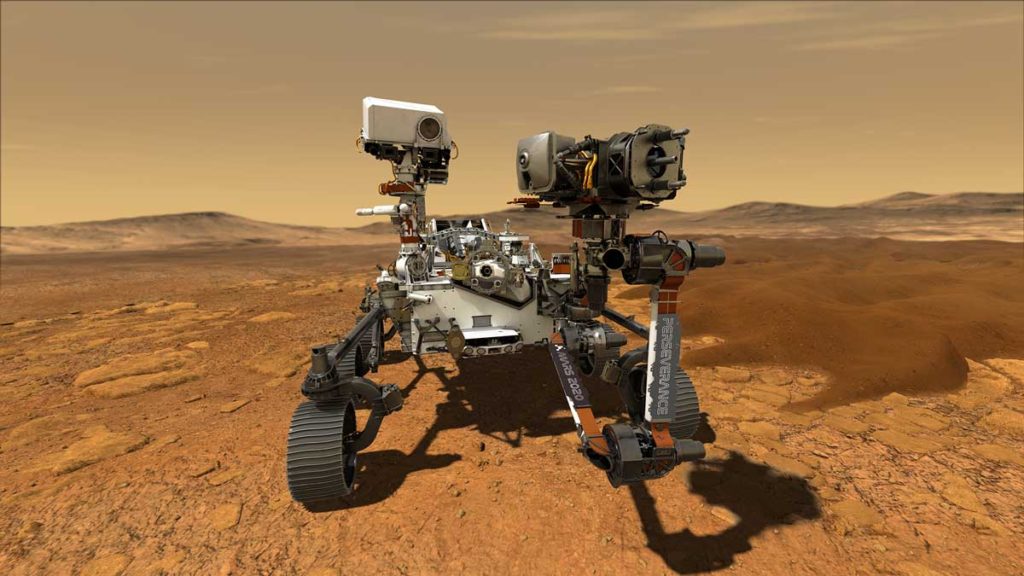
|
Fly Me to Mars (ProStar Publications, 2007) by Catherine Weitz, a geologist at the Planetary Science Institute, is a picture-book “visit” to Mars, covering major Martian features – tallest volcano, largest canyon, chilly polar regions, and two potato-shaped moons – and showing how Mars compares to Earth. For ages 3-7. |
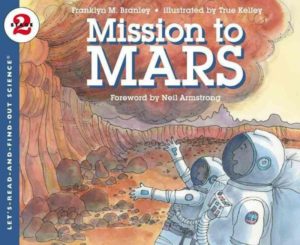
|
In Franklyn M. Branley’s chatty Mission to Mars (HarperCollins, 2002) in the Let’s-Read-and-Find-Out Science series, astronauts from the International Space Station establish a base on Mars, cope with such Martian challenges as dust, cold, and low gravity, and explore their surroundings. The book is illustrated with drawings and photographs; included is a great map of named Mars rocks (among them Warthog, Turtle, Barnacle Bill, Dragon, and Flipper). For ages 4-8. |
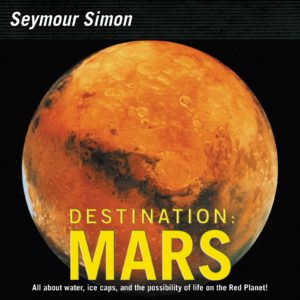
|
Seymour Simon’s Destination Mars (HarperCollins, 2004), spectacularly illustrated with maps, diagrams, and full-page color photographs from the Hubble Space Telescope, the Mars Orbiter Camera, and the Pathfinder lander, is an excellent introduction to the history and science of the planet for ages 5-8. |
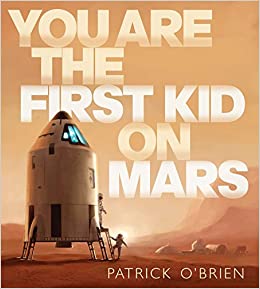
|
Patrick O’Brien’s You Are the First Kid on Mars (Putnam Juvenile, 2009) stars a little boy in an orange space suit traveling to Mars via space elevator, space station, and Nuclear Thermal Rocket (which last travels at a thrilling 75,000 miles per hour), and finally arriving at a Martian colony populated by scientists and engineers. The book is illustrated with wonderful photorealistic paintings, peppered with interesting facts, and written in the second person, which gives the text a feel of you-are-there immediacy. For ages 5-8. |

|
Alexandra Sly’s Cars on Mars (Charlesbridge Publishing, 2011) is the story of Spirit and Opportunity, the two golf-cart-sized rovers sent to Mars in 2003 and still gamely transmitting data. To date, they’ve sent home over 200,000 photographs, the most famous of which indicated the presence of water on the planet. The book is filled with intriguing and catchily presented information – for example, the cruising speed of the rovers is “ten times slower than that of a wood turtle” – and illustrations include great color photographs of the Martian surface. For ages 9 and up. |
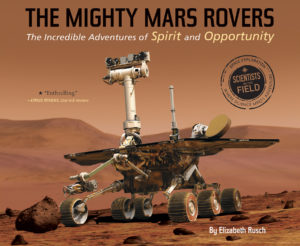
|
In the Scientist in the Field series, Steven Squyres’s The Mighty Mars Rovers (Houghton Mifflin Books for Children, 2012) is the story of Mars rovers Spirit and Opportunity (“the greatest space robot adventure of all time”), told by the lead scientist on the mission. For ages 10 and up. |
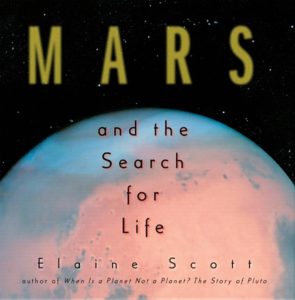
|
Elaine Scott’s Mars and the Search for Life (Clarion Books, 2008) is an attractively presented history of speculations about and explorations of the planet Mars, from Percival Lowell’s apocryphal canals and Orson Welles’s panic-inducing War of the Worlds broadcast through the Mariner flybys, Viking landers, and Spirit and Opportunity rovers. Sidebars provide interesting facts and supplementary explanations. The book is illustrated with photos, drawings, and diagrams. For ages 10-14. |
| |
From Astrobiology magazine, Tracing the Canals of Mars is short illustrated account of Percival Lowell’s (mistaken) sightings of “canals” on the Martian surface. |
 |
From NASA Science News, learn the truth about the famous giant Face on Mars at Unmasking the Face on Mars. |
| |
The Search for Life on Mars is an annotated photo timeline extending from Percival Lowell’s sighting of Martian “canals” in the 1880s to the 2012 Curiosity rover. |
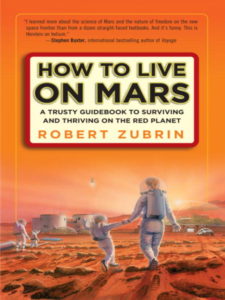
|
In Robert Zubrin’s How to Live on Mars: A Trusty Guidebook to Surviving and Thriving on the Red Planet (Three Rivers Press, 2008), the Martian narrator – born there in 2071 – provides hopeful immigrants with helpful hints and lots of information. Chapters include “How to Choose a Spacesuit,” “How to Choose Your First Ground Rover,” and “How to Stay Alive in the Desert.” Factual and fun. For teenagers and adults. |
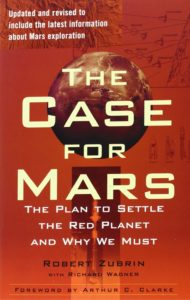
|
Robert Zubrin’s The Case for Mars: The Plan to Settle the Red Planet and Why We Must (Free Press, 2011) argues convincingly for Mars colonization. For teenagers and adults. |
| |
From the Symphony of Science musical video series, see Robert Zubrin, Carl Sagan, and others in The Case for Mars. |
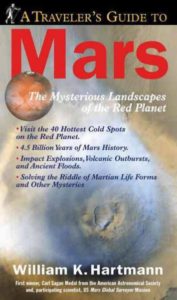 |
William K. Hartmann’s A Traveler’s Guide to Mars (Workman Publishing, 2003) is just what you’d stuff in your spacepack if you were a Mars-bound tourist. The history and geography of Mars, in detail, illustrated with photographs. For teenagers and adults. |
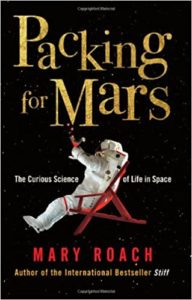
|
As a child, Mary Roach would certainly have sympathized with Beverly Cleary’s Ramona who – in Ramona the Pest (HarperCollins, 1992) – upsets her kindergarten class by demanding to know how Mike Mulligan went to the bathroom. It’s just such details that propel Roach’s scientific tell-all books, among them Packing for Mars (W.W. Norton & Company, 2011), which deals with the biology, psychology, and technology of space travel. Find out about sex, baths, and bathroom behavior in space. For older teenagers and adults. |
| |
Learn all about Mars with great photos at the Nine Planets website. |
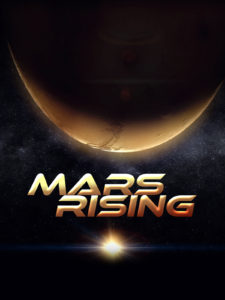 |
Mars Rising is a six-part documentary about a manned mission to Mars, including interviews with experts and film footage from such Mars-like Earth locations as Chile’s bone-dry Atacama Desert and the Arctic’s Devon Island. |
| |
From the Smithsonian Air and Space Museum, Exploring the Planets: Mars has historical info, up-to-date data on Mars and its moons, and a large database of Martian images. |
| |
Mars: The International Journal of Mars Science and Exploration has scholarly papers and online data for seriously committed Mars students. |
